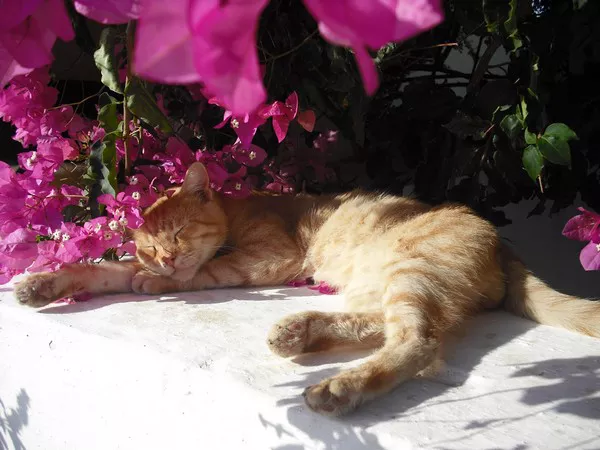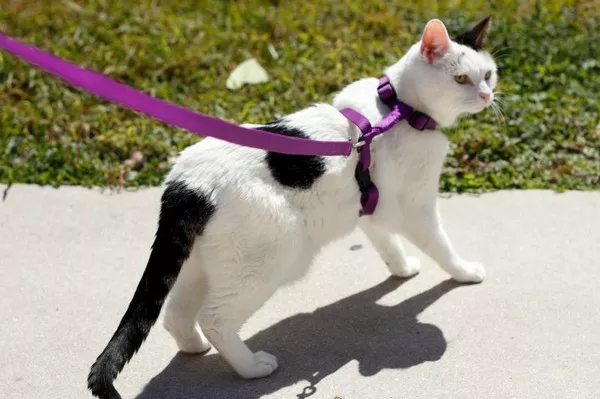Monitoring a cat’s stool is an essential yet often overlooked aspect of maintaining cat health. A cat’s feces can provide valuable insights into its overall well-being, often revealing early signs of potential health issues. In this comprehensive guide, we’ll explore the normal characteristics of healthy cat poop, identify signs of unhealthy stool, discuss common causes of abnormal feces, and offer tips for when to seek veterinary care.
Normal Cat Poop Characteristics
Understanding the baseline of what healthy cat poop looks like helps pet owners quickly spot any changes. The following factors—color, consistency, and odor—are crucial indicators of a cat’s digestive and overall health.
Color: Healthy cat poop is typically dark brown, indicating good digestion and proper absorption of nutrients. This color reflects a balanced diet and a functional digestive system. However, slight variations may occur depending on a cat’s diet.
Consistency: Normal cat feces should be firm but not hard. It is usually segmented into small, log-shaped pieces, similar in texture to modeling clay. This consistency indicates that the cat’s digestive system is working properly to absorb nutrients and manage water balance.
Odor: Cat poop will naturally have some odor, but it should not be overwhelmingly foul or have a metallic smell. A very strong or unusual odor may point to problems with digestion or underlying health concerns.
By knowing these characteristics, cat owners can more easily recognize when something is amiss. Sudden changes in color, consistency, or odor often suggest that the cat may be experiencing digestive issues or another health condition.
Signs of Unhealthy Cat Poop
When a cat’s poop deviates from the typical characteristics mentioned above, it may signal underlying health issues. The following signs are essential for determining when a cat’s digestive health may be compromised.
1. Color Changes
The color of a cat’s stool can change due to various factors, from diet to serious health issues. Noticing abnormal colors such as black, red, yellow, green, or white can help pet owners pinpoint potential health problems.
Black or Tarry: Black stool is often a sign of internal bleeding in the stomach or small intestine. This dark, tar-like consistency is usually the result of digested blood and should be investigated promptly.
Red or Bloody: Red streaks in stool indicate fresh blood, suggesting bleeding somewhere in the lower digestive tract, such as the colon. Blood in the stool is a common sign of inflammation, infection, or even trauma to the digestive tract.
Yellow: Yellow stool may indicate liver or gallbladder problems, as bilirubin—a pigment in bile—can give stool a yellow hue if it isn’t processed properly.
Green: Green stool can result from rapid food transit through the digestive tract or from the cat ingesting green-colored substances, including grass. It may also suggest digestive issues, especially if accompanied by other symptoms.
White or Pale: White or chalky stool may signal issues with bile production, often pointing to liver or gallbladder problems. In cats on raw diets, white stools could result from excessive calcium from bones.
2. Runny or Watery Poop (Diarrhea)
Diarrhea can manifest as a runny or watery stool and is often a sign of digestive distress. Possible causes include dietary intolerances, infections, parasites, or inflammation. Diarrhea is often accompanied by frequent bowel movements, and if left untreated, it can lead to dehydration and electrolyte imbalances.
3. Hard or Dry Poop (Constipation)
Constipation in cats can result in hard, dry, or pebble-like stools. These are usually small and difficult to pass, causing discomfort. Dehydration, low dietary fiber, or even certain medications can lead to constipation. Prolonged constipation may develop into a serious condition called megacolon, where the colon becomes abnormally large due to stool buildup.
4. Presence of Blood or Mucus
Finding blood or mucus in a cat’s stool is another indication of potential gastrointestinal problems. Blood, either fresh or digested, often points to inflammation or infection, while mucus can suggest irritation in the intestines. Mucus-coated stool may occur in cases of colitis, where the colon becomes inflamed.
Common Causes of Unhealthy Cat Poop
Several underlying factors can contribute to abnormal stool in cats. Understanding these causes can help pet owners manage or prevent digestive problems and ensure better cat health.
1. Dietary Issues
Diet is a significant factor affecting a cat’s stool quality. Sudden changes in diet, food intolerances, or consumption of inappropriate foods can lead to diarrhea, constipation, or other stool abnormalities.
Food Sensitivities: Cats may develop sensitivities to certain ingredients, such as grains or specific proteins, which can cause gastrointestinal distress, resulting in diarrhea or bloating.
Low Fiber Intake: Lack of dietary fiber can contribute to constipation. Fiber aids in proper digestion and helps maintain a healthy consistency in stool.
Ingestion of Foreign Objects: Cats are known for their curiosity, and if they ingest non-food items like hair ties, plants, or small objects, it can obstruct their digestive system and lead to changes in stool.
2. Infections
Bacterial, viral, or parasitic infections are common causes of diarrhea and abnormal stool in cats.
Bacterial Infections: Salmonella, E. coli, and Clostridium are bacterial pathogens that can cause severe gastrointestinal upset in cats, often resulting in diarrhea.
Viral Infections: Feline infectious peritonitis (FIP) and feline parvovirus are examples of viruses that can affect a cat’s gastrointestinal system, sometimes leading to stool changes.
Parasites: Internal parasites, such as roundworms, hookworms, and Giardia, can cause diarrhea and lead to weight loss, vomiting, and poor coat condition. Regular deworming and fecal exams help keep cats parasite-free.
3. Dehydration
Dehydration can quickly affect a cat’s stool quality, resulting in hard, dry stools. Cats are prone to dehydration, especially if they consume only dry food or don’t have regular access to fresh water. Adequate hydration is essential for softening stool and maintaining proper digestion.
4. Stress
Stress affects a cat’s entire body, including its digestive health. Cats are sensitive to environmental changes, and factors like a new pet, moving homes, or loud noises can cause stress-induced diarrhea or constipation.
Stress can also lead to behavioral changes, which may impact a cat’s routine, including its eating and drinking habits. Monitoring these behaviors can provide clues to any digestive changes and overall cat health.
When to Seek Veterinary Care
Knowing when to seek veterinary care is essential to ensuring that any health issues are addressed before they escalate. While occasional stool irregularities may resolve on their own, recurring or severe symptoms require professional attention.
1. Frequency of Issues
If your cat experiences diarrhea or constipation more than 2-3 times in a short period, it’s advisable to consult a veterinarian. Persistent digestive issues may indicate a more serious underlying health condition that requires diagnosis and treatment.
2. Other Symptoms
In addition to stool abnormalities, watch for other symptoms like vomiting, lethargy, changes in appetite, or sudden weight loss. These symptoms, when combined with abnormal poop, could signal a severe health condition, such as kidney disease, liver issues, or gastrointestinal disease.
3. Signs of Pain
If your cat exhibits signs of pain, such as crying, straining while defecating, or avoiding the litter box, it may be suffering from a blockage or gastrointestinal issue that needs immediate veterinary intervention.
Tips for Monitoring Cat Poop
Regularly monitoring your cat’s poop can provide essential insights into its health. Here are some practical tips for pet owners:
1. Regular Checks
Check the litter box daily to observe any changes in stool color, consistency, or odor. By staying vigilant, you can detect changes early and seek veterinary advice if needed.
2. Keep Records
Maintaining a log of your cat’s stool quality and any other symptoms can be helpful when visiting the vet. A detailed record of any abnormalities, including the frequency and duration of issues, can assist your veterinarian in diagnosing the cause more accurately.
3. Observe Dietary Changes
When introducing new foods, do so gradually to monitor how your cat’s digestive system responds. Sudden dietary changes can upset a cat’s stomach, leading to diarrhea or constipation. A slow transition over several days can minimize this risk.
4. Provide Adequate Hydration
Encourage your cat to drink water by providing multiple sources throughout your home. Many cats enjoy running water, so consider investing in a water fountain if your cat doesn’t drink from a bowl. Proper hydration aids in digestion and helps prevent constipation.
Conclusion
Understanding what unhealthy cat poop looks like is a key aspect of maintaining your cat’s health. Monitoring for changes in color, consistency, and odor allows pet owners to detect potential health issues early. Various factors, including diet, infections, dehydration, and stress, can impact the quality of a cat’s stool. Keeping an eye on your cat’s litter box may seem like a small task, but it plays a crucial role in your cat’s overall wellness. Remember, early intervention and regular monitoring of cat health can make a substantial difference in a cat’s quality of life.
Related Topics


























